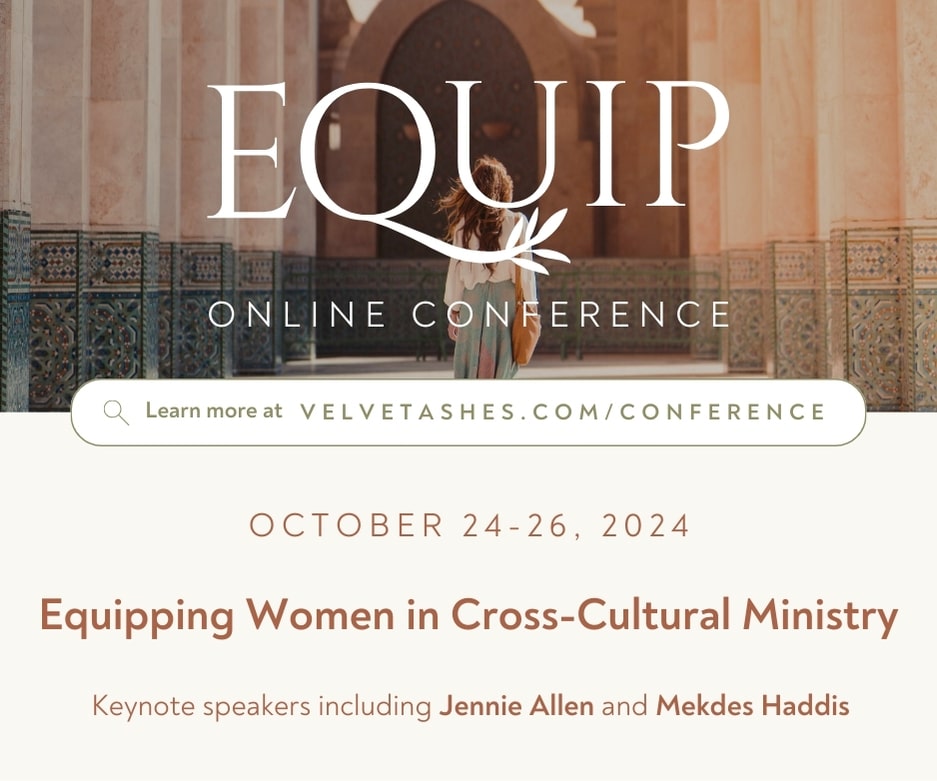EMQ » July–September 2022 » Volume 58 Issue 3

Sign Language Translation
The world’s 300+ Deaf people groups have long been denied access to the Scriptures in their native languages – sign languages. But advancements in accessible technology have made sign language Bible translation a reality.
By Marisa Sorenson
In countries like the United States, the Bible is readily available everywhere. There are dozens of different translations, and study tools, commentaries, devotions, and even more resources easily accessible online. There are Bible apps, Bible websites, Bibles in stores, and even organizations giving out free Bibles. Some hotels even have the Gideon Bible in the drawers of their nightstands.
In other countries, believers may secretly smuggle in Bibles in their own language to share with others. They may also face persecution from various avenues such as the government, their own families, adherents to opposing religions, and more for reading or even owning a Bible.
Still other people belong to communities which have little to no access to Scripture in their native languages. Translation work is happening across the globe to change this reality. Everyday more people get Scripture translated into their language. Soon, every person on earth will have the chance to come to know Christ through the Word of God in a language they understand. And they will also have the opportunity to receive the wonderful free gift of salvation.
Most spoken languages have written forms with characters that represent words or syllables or letters representing the different sounds. Technological advances such as the invention of the printing press and the radio helped make the distribution of Bibles in many of these written and spoken languages widespread.
But Deaf people groups have long been denied access to the Scriptures in their native languages – sign languages. Throughout history, the main reason for this was the lack of technology to capture visual and spatial languages. But technology has finally caught up!
Advancements in available tools and their accessibility has made sign language Bible translation a reality. Translation teams can now easily use video cameras, computers, and editing software to create sign language translations. And internet speeds are fast enough that Deaf people can download those video Scriptures to their phones to watch the Word of God from anywhere in the world. Deaf people finally have a way to access the gospel in their native languages. In response to these developments, many Deaf people say that their time has arrived, and that the time for Deaf people is now!
Deaf people finally have a way to access the gospel in their native languages.
Why Sign Language Bibles? Why Not Written Bibles?
Deaf people’s reading abilities vary widely. Most people learn their native language through hearing. They listen, understand, and then speak their language before learning to read. For Deaf people, the experience of learning to read can be very different. They may have little to no exposure to spoken language before starting school. This means that learning to read is often combined with learning a new language. It is much more difficult. Some Deaf people become very proficient at reading, but for most Deaf people worldwide, that is not the case.
Jatin* is from Asia and was born Deaf. He grew up in a Hindu family, but he had a written Bible that he often tried to read. In it, he learned of Jesus, but he struggled to figure anything out about Jesus. Comprehending the Bible’s written text required enormous effort, and Jatin was frequently left with unanswered questions. When he tried to ask his family members his questions, he encountered another barrier. Jatin’s family members did not know the local sign language, so they could not communicate with him.
One day, Abishak,* a Deaf church planter, stopped by Jatin’s home for a visit. When Jatin told him about his situation, Abishak began visiting regularly. Using sign language, Abishak started teaching Jatin about God and answering his many questions. Abishak also introduced Jatin to a Bible translation in his native sign language. Today, Jatin regularly attends a Deaf believers’ fellowship. He eagerly learns about God, and excitedly watches Bible passages in sign language each week.
For Deaf people, like Jatin, the quickest way to receive the gospel was not for someone to teach them to read, but to translate Scripture into their languages – their sign languages! When the gospel becomes available in their sign languages, many Deaf people understand and engage with the good news on a deeper level than when they wrestle to understand the written text.
Sign language Bibles use video technology to capture the spatial and visual aspects of sign language. The videos feature Deaf translators signing Scripture passages in their native language. In this way, they are closer to oral Bibles – where spoken languages are represented in audio – than written Bibles.
To see some examples of published sign language Scripture, visit www.deafbible.com or www.doorinternational.org/bible-languages.
Sign Language is Not Universal
It is a common misconception that there is one universal sign language. Each country has its own language that is unique, and some countries may even have several unique sign languages used by different Deaf people groups. Sign languages usually originate in Deaf schools or other places where Deaf people gather often.
For example, most Deaf people in the United States use American Sign Language (ASL), which was influenced by French Sign Language (LSF). That happened because the first Deaf school in the US had a Deaf Frenchman named Laurent Clerc as a teacher.[1] Over time, ASL became distinct from LSF.
The United States also had a sign language called Martha’s Vineyard Sign Language (MVSL),[2] named after the island in Massachusetts. Because there was an unusually large concentration of Deaf people there in the 1800s, and they developed their own sign language. But when traveling to the mainland became easier, ASL became the primary sign language, and MVSL died out.
This is just an example of how sign languages start and die out like spoken languages. While no definite number of sign languages worldwide currently exists, the latest estimate puts the total number at more than 300.[3]
What is the Process of Sign Language Bible Translation?
Many sign language translations begin with a team of several native signers who draft passages in their language which then are checked by a translation consultant to ensure that the translation meets the standards set forth by the Forum of Bible Agencies International (FOBAI)[4]. These standards help maintain accountability for the projects and ensure that translations are accurate.
Unfortunately, there are not enough translation consultants trained in sign languages to satisfy the global demand for such consultants. Currently, DOOR International has the most with 11 sign language consultants, six specialized linguistic consultants, and more being trained.
The exact process of translating a sign language Bible may look different among different teams. The following illustration shows a simplified example of one such process used by DOOR International and other organizations. A variety of components lead into the video production phase. That part of the translation involves a video studio and a Deaf translator signing on-camera. Then a video editor puts everything together into a clear video with plenty of visual materials to complement the passage such as illustrations or maps.

Most sign languages don’t have dictionaries, and they are always growing and evolving, which is why community feedback/testing is an important component of the process. For example, a sign language in North Africa, used the exact same sign for heaven and sky. But in the Bible, there are a lot of places where they needed to specifically communicate the difference between heaven (the place of God) and the sky (what we see with our naked eyes).
In a conversation or a presentation, they could easily clarify the distinction. But in sign language translation, the videos are static and don’t run on a feedback loop like a conversational exchange does. The translation team for this North African sign language had to decide how to differentiate the two concepts. They had a lengthy discussion with church members from their country and other members of the Deaf community, finally settling on a brand-new sign for sky.
Sign Language Translations are not Cheap
Sign language Bible translation takes considerably more time and funding to complete than other types of translation. The average cost for spoken language translations is about $15 to $20 per verse, while sign language projects can average $150 to $200 per verse or higher.[5] One of the major reasons for the increased cost is the medium in which sign language translation is expressed. Print and audio Bibles are significantly cheaper than video Bibles. The technological equipment alone adds a lot to the cost of a video Bible.
Another factor is the cost of training. Many Deaf people worldwide lack opportunities for education of all kinds, so finding Deaf people already trained in the process and principles of translation or have college degrees in related fields is like searching for a unicorn. Translation training for Deaf translators is specialized. It is only hosted in only a few places worldwide, and it can take six months or more to complete. But once translation teams are trained, the translation process speeds up exponentially as the team gains more experience and confidence in their work.
Some additional costs include the team’s travel to the translation training location, hosting community reviews/checks, paying the translation consultant working with the team, and replacing equipment as it wears out.
People working in sign language translation see the impact the finished product has on Deaf hearts and souls first-hand. To them, the value of sign language translation is priceless. Lewis is one of those people. He’s been Deaf since birth and never learned to read. He is one of more than 410,000 Deaf people in Kenya.[6]
For most of his life, Lewis was very reserved. But when he saw God’s Word in sign language for the first time, a huge smile spread across his face. This reserved man became vibrant! He began inviting Deaf friends to come to his house so they could watch Scripture in Kenyan Sign Language. Currently, he is one of the most active Deaf evangelists in Kenya.
“I am so happy to see God’s Word in sign language,” Lewis said. “I feel as if God is personally communicating to me when I watch the passages. I am always practicing the stories and sharing them with other Deaf people….”
Why are Sign Language Translations Essential?
The length of time and the expense involved in sign language translation may be off-putting at first. But it is truly essential. It is part of forming a solid foundation for the seed of the gospel to take root, and it promotes further spiritual growth.
Sarah* is a Deaf believer in Eurasia who became a Christian many years ago. Her struggle to read the written Bible in her country’s language limited her spiritual growth. One day she met two evangelists who were showing a Bible passage translated into Sarah’s sign language to another Deaf person.
Sarah immediately went over to them and asked if they could share the Bible translation with her. When she watched the Bible in her language, she started crying. She finally understood what the Bible said. After that, Sarah told her friends about the sign language Bible. She became instrumental in bringing the gospel to many more Deaf people in the area where she lives.
Without access to the gospel in their native language, many Deaf people, like Sarah, are limited to wrestling with the text in their second or third languages or receiving the good news from others who are fluent in the written language. This makes spiritual growth more challenging. Personal devotion time is spent trying to figure out what a Bible text means instead of considering how to apply the Scriptures to one’s life.
Serving in the church is also more difficult for Deaf people because most churches do not have accessible Scriptures readily available. Deaf churches need the Bible in sign language so that every member of the congregation can fully use their spiritual gifts and serve in the body of Christ.
Without the Bible in sign language, Deaf churches become dependent on certain members of the church who are fluent readers and can interpret the Bible for the others. This situation is not unique to the Deaf people groups. It also happens in churches with a spoken language that has no Bible translation in it. The members of these language groups often also become dependent on the few who are fluent in languages other than their native one.
Without the Bible in sign language, Deaf churches become dependent on certain members of the church who are fluent readers and can interpret the Bible for the others.
Sign Language Translations Welcome the Deaf into Christian Community
Behind each sign language translation is an unreached Deaf people group. Historically marginalized and considered the least of the least, many Deaf souls are hungry to receive the gospel. But without God’s Word in their languages, many Deaf have long felt cut off from Christian community.
Without God’s Word in their languages, many Deaf have long felt cut off from Christian community.
Amoah is Deaf and lives in southern Ghana. He always thought Christianity was only for hearing people. He explained, “Church has never been part of my life. I attended a hearing church growing up, and I didn’t like it. It was tailored for hearing people, and since I am Deaf, there was no sense of belonging for me.”
When several Deaf friends told him about a Deaf church led by a Deaf pastor, Amoah became curious. He never imagined a church like that! He attended the church with his friends and watched the Deaf pastor teach God’s Word in his sign language.
“The warmth and understanding of God’s Word that I received touched my heart,” he said. “My life has been transformed. Through the teaching and preaching of God’s Word in my heart language, I became fully aware of my sins and how my life grieves God. I accepted God’s forgiveness in Christ, and I now think differently.”
When his pastor taught about water baptism, Amoah immediately volunteered to be baptized.
“I am so thankful to God for reaching out to me and using Deaf believers who communicate in the language I understand best. I feel a burden in my heart to tell every Deaf person I meet about God’s love for them,” he said. “God indeed loves Deaf people and wants us to spend eternity with him in heaven. I was wrong. The Church is not just for hearing people. The Church is for Deaf people as well.”
For believers like Jatin, Lewis, Sarah, and Amoah, God no longer communicates in a foreign language – he signs in their sign languages. But many Deaf around the world still wait for that same opportunity.

Marisa Sorenson (marisas@doorinternational.org) is Deaf and is the communications coordinator for DOOR International. After growing up on the mission field, God called her to use her gifts in communication to help 70 million Deaf people gain the opportunity to know God. She is grateful for the privilege of having full access to the gospel in sign language and a personal relationship with the Lord from an early age.
* Pseudonym used to maintain security.
Notes
[1] Lorida R Canlas, “Laurent Clerc: Apostle to the Deaf People of the New World,” Gallaudet University, accessed February 17, 2022, https://clerccenter.gallaudet.edu/national-resources/info/info-to-go/deaf-culture/laurent-clerc.htmlhttps://clerccenter.gallaudet.edu/national-resources/info/info-to-go/deaf-culture/laurent-clerc.html.
[2] Cari Romm, “The Life and Death of Martha’s Vineyard Sign Language.” The Altantic, September 25, 2015. https://www.theatlantic.com/health/archive/2015/09/marthas-vineyard-sign-language-asl/407191.
[3] “International Day of Sign Languages, 23 September,” United Nations, accessed February 28, 2022, https://www.un.org/en/observances/sign-languages-day.
[4] “Translation Standards,” Forum of Bible Agencies International, accessed February 28, 2022, https://forum-intl.org/resources/translation-standards/.
[5] “Why are Sign Language Translations More Expensive?” DOOR International, April 20, 2020. https://doorinternational.org/wp-content/uploads/2022/04/Why-are-Sign-Language-Bible-Translations-More-Expensive.pdf.
[6] “Language: Kenyan Sign Language,” Joshua Project, accessed April 11, 2022, https://joshuaproject.net/languages/xki.
EMQ, Volume 58, Issue 3. Copyright © 2022 by Missio Nexus. All rights reserved. Not to be reproduced or copied in any form without written permission from Missio Nexus. Email: EMQ@MissioNexus.org.






Responses